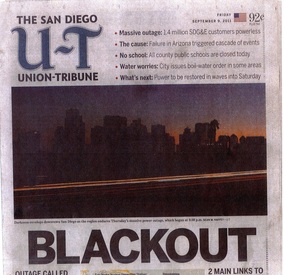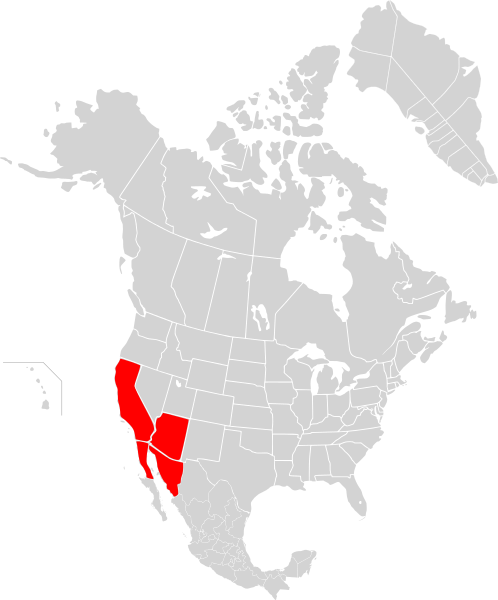| You turn on your car only to see that you are already running on empty and wonder if you can make the twenty-mile ride home to the San Diego coastline. Radio announcers inform that the blackout has affected more than 7 million people throughout central California to southern California, western Arizona, and even through northern Mexico. You panic as you realize that you do not have reception to call your significant other to find out if (s)he is ok. You remember that you heard that hundreds of service towers have been shut down. You decide to brave it out as you roll out into the bumper-to-bumper traffic but run out of gas minutes after getting off the freeway into your neighborhood. |

You abandon your car on the side of the road like dozens of others and walk out into the 95+ degree Fahrenheit (35+ degree Celsius) weather by groups of people camped out by gas stations with heat-exhausted faces. It took four hours to get home and find your significant other boiling water on the BBQ. Apparently the energy blackout affected sewage-pumping stations, making tap water unsafe to drink. Hours go by and you both decide to sleep outside to keep cool. When you wake up, electricity is back, and the realities of the energy blackout are revealed. Supermarkets were obliged to throw out tons upon tons of spoiled food products, leading to a catastrophic monetary loss. One San Diegan hospital faced life-threatening dangers when its back up energy generator took two hours to function. Convenient stores closed off service to all but four to five customers at a time to deter riots. Though this blackout lasted for 16 hours, people were on the brink of full-fledged panic. Life stood still until energy was restored.
This event, known as the Great Southwest Blackout of 2011, was the largest power failure in Californian history. A procedural error made by a technician caused the line to trip, causing the entire Southwest Power line cascade to a blackout. This event shows how vulnerable the USA energy grid is, much like those of many countries, and how safeguards are not secure enough to prevent a future blackout. With this real-life narrative, it is easy to grasp the gravity of our modern day reliance on energy. Nearly every aspect of our lives is powered by energy that we most of the time, take for granted. What will you do to change this path dependency?

 RSS Feed
RSS Feed
